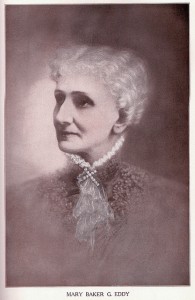You’ve probably seen the headlines:
- Power of a Super Attitude (USA Today, 2004)
- A Positive Attitude Might Improve Your Health, Longevity (U.S. News & World Report, 2009)
- Heal thyself: Think positive (New Scientist, 2011)
And there is more…much more from Oprah show episodes, to PBS specials and the cover of what seems to be most major magazines. The idea that having a positive attitude will not just promote health but cure you has been long ingrained in our society’s collective consciousness. It is so often taken as fact that we rarely question where this notion came from.
Over the next four posts, I’m going to explore our belief in positive thinking as a healing force. We’ll look at what is true and helpful as well as the potential these beliefs have to impede healing.
This first post will look at where it all started…
Part 1: The Beginning
The modern positive thinking movement started in the late 1800s with a watchmaker named Phineas Quimby. Quimby became fascinated with the practice of mesmerism (a.k.a. hypnotism). He became the apprentice of a famous French mesmerist and traveled New England learning the trade. Once he could hypnotize on his own, he opened a practice and started having some success alleviating the symptoms of psychosomatic disorders. This lead him to believe that the body was a reflection of the mind and that all illness was caused by false beliefs.

photo credit: perpetualplum via photopin cc
Parallel to Quimby’s work in mesmerism, Mary Baker Eddy was becoming disillusioned with the church she grew up in and specifically with the doctrine of predestination. She wanted to see God as all loving and personal. She desired a sense of control – a hand in her destiny. This was probably because Eddy had copped with chronic illness ever since she was a child.
Medical practices in the 1800s were rather harsh, and Eddy tended to seek out alternative forms of treatment. This lead her to become a patient of Quimby’s who was able to, at least temporarily, heal her. Over the next three years Eddy and Quimby had dozens of conversations about the mind-body connection. They conjectured that “right thinking,” defined as thinking in alignment with scripture could cure any ailment.
Shortly after Quimby’s deth, Eddy has the misfortune of slipping on some ice and falling – a fall bad enough to make her bedridden. Since Quimby was not around to assist with her healing, Eddy called for her bible. The story goes that Eddy was reading about Christ’s healing powers when she had her own miraculous healing. She was able to get out of bed and return to her normal activities. That moment was the moment Eddy said she discovered Christian Science.

First Church of Christ, Scientist in Boston, MA
photo credit: perpetualplum via photopin cc
Christian Science was the beginning of what is now known as the New Thought movement. This movement sparked a number of spiritual organizations – the most famous of which are Unity and The Church of Religious Science.
You may recognize Christian Science as being the faith of families who are in the news because they’ve refused some form of medical care. It is somewhat odd to think that the basis of our belief in positive thinking (at least part of it) has come from this organization. The “daughter” faiths (Unity, Church of Religious Science, …) do not subscribe to this part of the philosophy, but they do have similar views of God and manifestation.
New Thought promotes the idea that God is everywhere – all of life is divine – and therefore true nature is one of wholeness, peace, health and prosperity. By using “right thinking,” any person can align their thoughts with the divine and create healing.
While these ideas began swirling in the spiritual realm, there was a researcher at Harvard who was about to have his own mind-body experience.
The next post will look at how science and spirituality collided to permanently connect the mind to the body.
Looking for practical ways to use the mind-body connection? Check out
Chronic Resilience: 10 Sanity-Saving Strategies for Women Coping with the Stress of Illness.
“I highly recommend this groundbreaking book!”
-Kris Carr, NY Times Bestselling Author